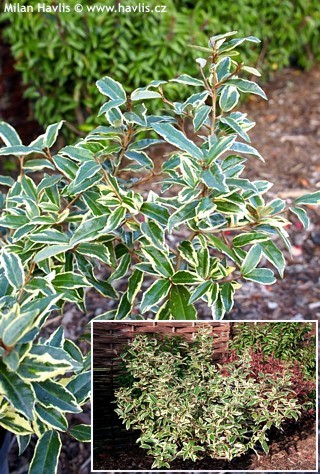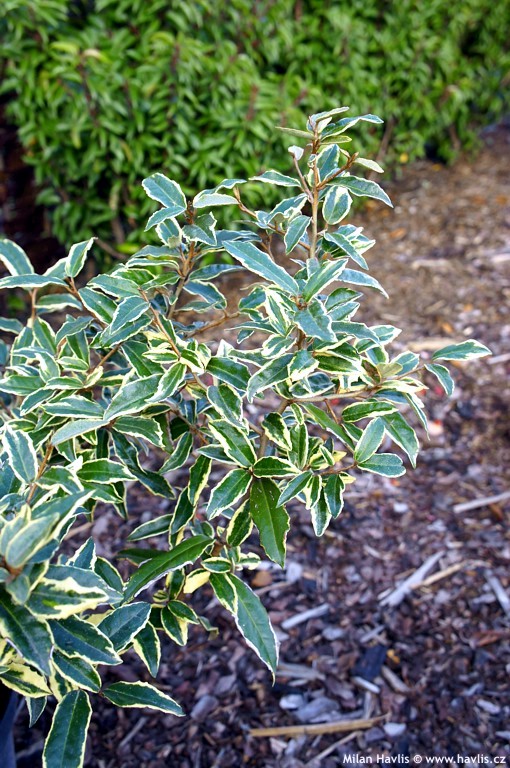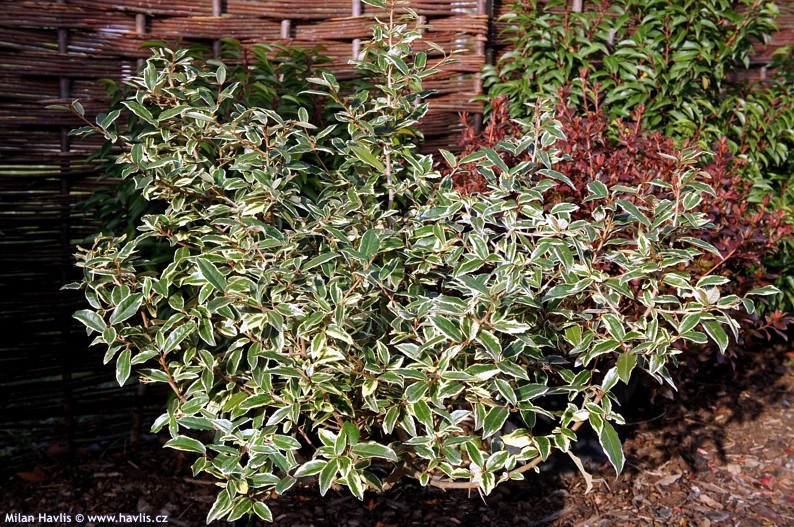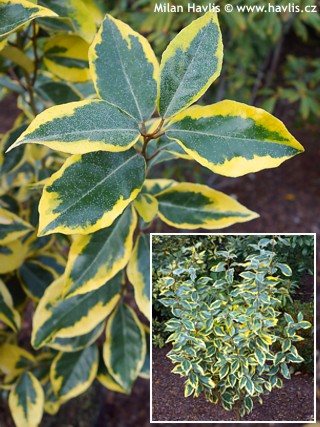Elaeagnus pungens 'HOSUBA FUKURIN' silverthorn, thorny olive
size/type
medium-sized shrub,medium-sized shrub
usual height
1,5-2,5m
usual width
1,5-3m
leaves
evergreen broadleaf
colour of leaves
flowers
less showy but noticeable
colour of flowers
blooming time
September-October
location
full to partial sun
soil type
any (acidic to alkaline)
soil moisture requirements
evenly moist (dislikes drought)
USDA zone (lowest)
7 (down to -23°C)
winter protection
for zone 5+6

for zone 7

categorized
Elaeagnus
Thorny olive is a Japanese taxon and an evergreen species of silverthorn. It features large and in case of cultivated varieties mostly coloured foliage and 2-3 cm long thorns scattered along the twigs. In their natural habitat they were used especially in hedges as a natural barrier against animals. There are a few varieties that differ in leaf colour and habit, and in gardens down to USDA zone 6 they are grown more for their ornamental value than its prickly utility. It grows fast and responds well to pruning.Description of the plant:
Hosuba Fukurin is a coloured variety in the evergreen silverthorn family. It has narrowly ovate to elliptic, glossy, evergreen, leathery, rich green leaves with creamy beige variegation at margins. They are covered with silver dots on the upper side and their reverse is entirely silver-grey. Young twigs and canes are orange-brown and have short, prickly thorns. In late summer and early autumn appear tiny flowers which are difficult to spot at the first sight but you can definitely smell them from a few meters. They have a lovely, sweet fragrance, especially on sunny afternoons and evenings. They are usually not followed by fruit. Thorny olive grows fast but Hosuba Fukurin is not that wild when it comes to annual growth. It forms a rather evenly branched shrub about 1 meter tall and a little more wide in 10 years. Just like every evergreen silverthorn, its branches often reverse to its original genotype with solely green leaves. These need to be removed as soon as spotted because they are more vigorous than the coloured ones and might uncontrollably dominate the bush.
Silverthorn can be pruned in almost any manner at almost any time from spring till autumn. It is soil adaptable as it can fix nitrogen from atmosphere and distribute it to its roots. It only needs good winter mulching in our climate to protect surface roots from heavy frost. It will not live in boggy and wet conditions. This is a tough plant that is even grown in the warmest parts of Siberia, and if it manifests some damage after a harsh winter it readily regenerates from healthy wood. It is tolerant of exposed conditions, salt, extreme heat and drought, and withstands windy areas. Hardy to min. -23 °C (USDA zone 6).
Last update 02-11-2012; 20-08-2022
QUICK PRICE OVERVIEW
CURRENTLY SOLD OUT
WANT TO TRY A SIMILAR PLANT?

















